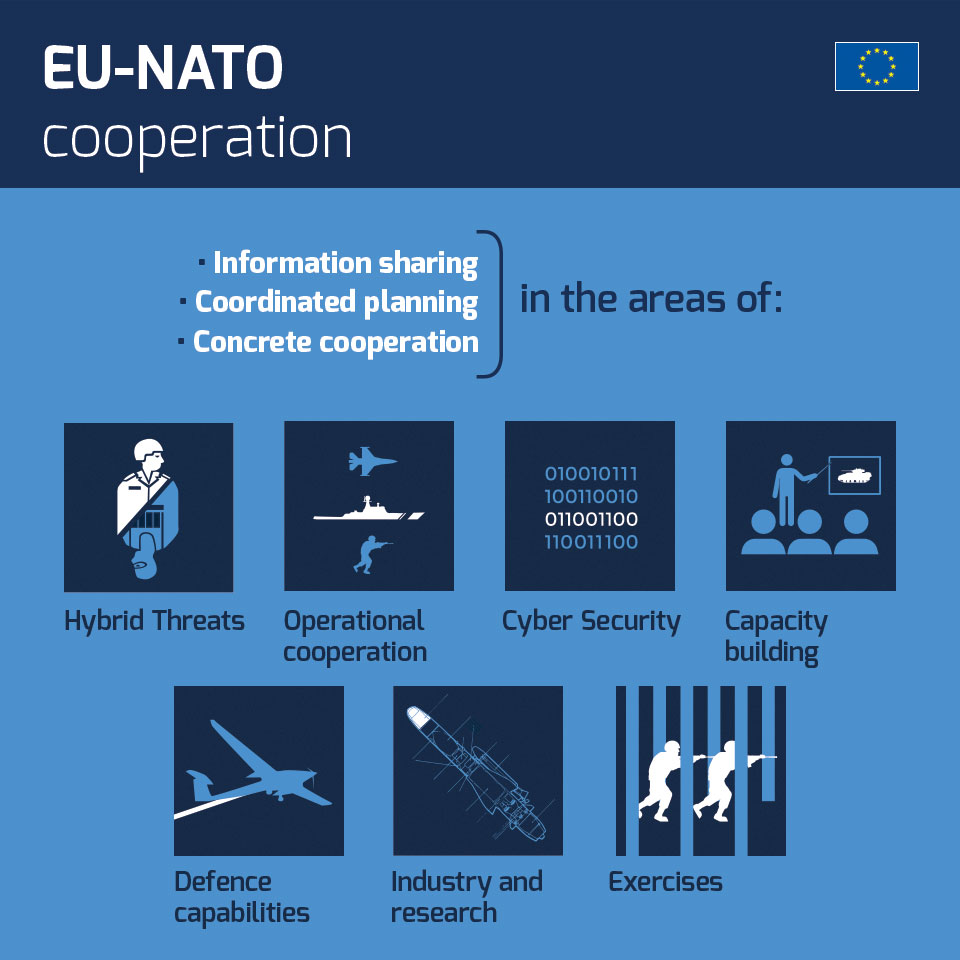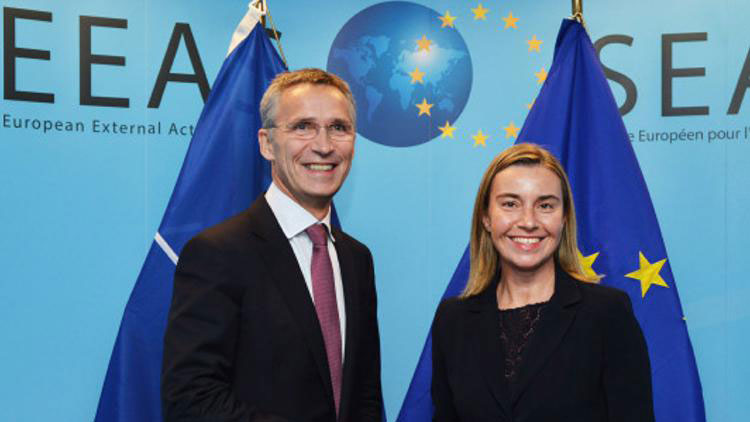In today’s insecure world, the EU has set out to help protecting more effectively the EU and its citizens. NATO is a major and logical partner in this context. Both organisations started in 2016 to develop a programme of deep cooperation where their strengths and assets complement and reinforce each other. The outcome of the cooperation is effective use of public money but it also helps taking EU defence and security beyond the levels that each EU or NATO could achieve if they acted in isolation. On the 6th of June 2018 the Council welcomed the 3rd process report on the implementation of the common set of proposals endorsed by EU and NATO Ministers.
Instability and conflict are major issues in many parts of the world. These challenges do not stop at borders and at times have a direct effect on the EU and its citizens. That is why the 2016 “Global Strategy for the European Union’s Foreign and Security Policy” emphasises the need to strengthen Europe’s collective security. Also, a majority of EU citizens as well as third partner countries and organisations expect the EU to play a larger role as a global security provider
But there is no intention to re-invent the wheel. EU efforts are complementary and mutually supportive with existing security capabilities and structures while seeking to gradually build strategic autonomy.
As EU High Representative Federica Mogherini stated: “For the European Union it is clear that a strong European Union in the field of security and defence makes NATO stronger and a strong NATO is key to European security.”
 Close cooperation with the North Atlantic Treaty Organisation, NATO is essential. 22 of the 28 EU Member States are also NATO Allies and most other EU Member States have a partner status with NATO. EU and NATO can mobilise a broad range of tools and make the most efficient use of resources to address security challenges and enhance the security of their citizens. This is also reflected in the areas of cooperation, which include among others countering hybrid as well as cyber threats, coordinated exercises as well as capacity building, such as military mobility.
Close cooperation with the North Atlantic Treaty Organisation, NATO is essential. 22 of the 28 EU Member States are also NATO Allies and most other EU Member States have a partner status with NATO. EU and NATO can mobilise a broad range of tools and make the most efficient use of resources to address security challenges and enhance the security of their citizens. This is also reflected in the areas of cooperation, which include among others countering hybrid as well as cyber threats, coordinated exercises as well as capacity building, such as military mobility.
The EU and NATO are different organisations. The EU is a political and in many respects supranational entity dealing with a wide range of policies, while NATO is primarily a military alliance. However, both are founded in the same system of values and have major security related objectives in common.
On 08 July 2016 the Presidents of both organisations signed a Joint Declaration in Warsaw giving new impetus and substance to the partnership. It outlined a set of concrete areas and actions for cooperation with a focus on deliverables. Since then further action points have been added at end of 2017 to reach today an impressive total of 74 such points. The areas concerned are of high interest to both parties such as hybrid threats, defence capabilities, counter-terrorism, military mobility or women, peace and security.
Every year a progress report on the implementation of the common set of proposals is published by EU and NATO. Three reports were already submitted showing tangible progress over the short span of time. You can find the latest report from 07 March 2018 here.
In this context, it is important to note that defence is only one element in the EU’s toolbox to tackle today’s complex security challenges effectively. Another important tool are the EU’s civilian capabilities. There are currently ten civilian EU missions in third countries helping for example to help building a credible police force in Iraq, supporting the rule of law in Kosovo or defusing tensions in Georgia before they can result in new conflict.
EU-NATO cooperation continues to take place on the basis of key guiding principles: openness, transparency, inclusiveness and reciprocity, in full respect of the decision-making autonomy and procedures of both organisations without prejudice to the specific character of the security and defence policy of any Member State.



